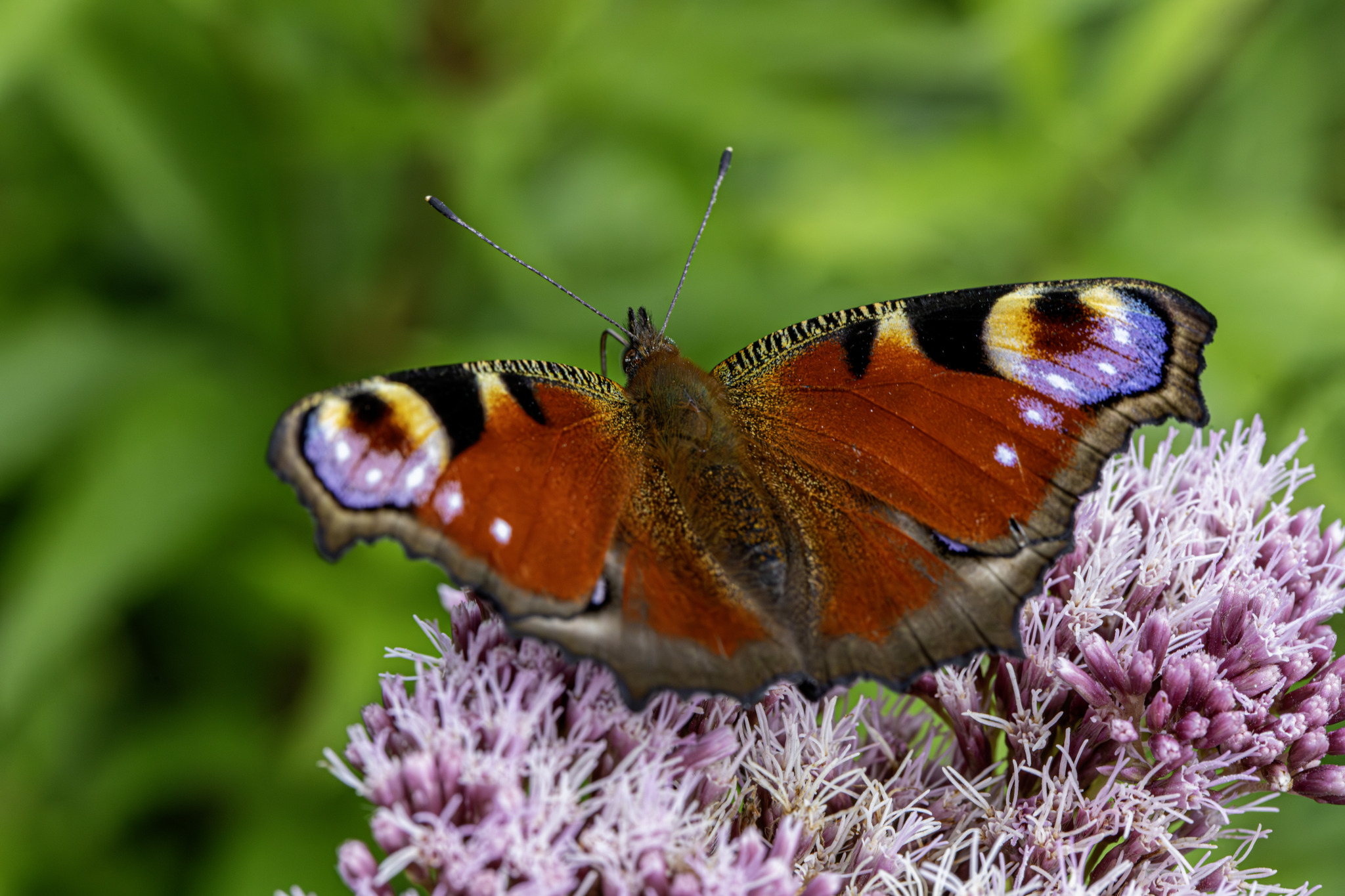The European Peacock (Aglais io), also known simply as the Peacock Butterfly, is a colorful and distinctive butterfly species found in Europe and parts of Asia. Here are some key features and characteristics of the European Peacock:
- Appearance: The European Peacock is known for its striking and colorful wing pattern. The upper side of its wings is predominantly dark brown or black with striking metallic blue “eyespots” bordered by orange rings. The undersides of its wings are mottled brown, providing excellent camouflage when the butterfly is at rest, as it resembles dead leaves. When the wings are open, the eyespots can startle or deter potential predators.
- Size: European Peacock butterflies have a wingspan that typically ranges from 50 to 55 millimeters (about 2 to 2.2 inches).
- Habitat: European Peacock butterflies inhabit a variety of habitats, including meadows, fields, gardens, parks, and woodland edges. They are commonly found in areas with abundant nectar sources and suitable breeding habitats.
- Range: The European Peacock is widely distributed throughout Europe, including the British Isles, Scandinavia, the Mediterranean region, and parts of Asia. It is absent from the far northern regions and some Mediterranean islands.
- Lifecycle: European Peacock butterflies undergo complete metamorphosis, with egg, larva (caterpillar), pupa (chrysalis), and adult stages. The caterpillars are black with spiky projections and feed on stinging nettles (Urtica dioica) and sometimes hops (Humulus species). Adults feed on the nectar of various flowers, including thistles, brambles, and buddleia.
- Behavior: European Peacock butterflies are diurnal and are often seen basking in the sun with their wings open to absorb warmth. They are strong fliers and can travel considerable distances in search of food and suitable breeding sites. They are known for their distinctive flight pattern, which is relatively slow and fluttery.
- Conservation: The European Peacock is not considered globally threatened and is a common and widespread species throughout its range. However, like many butterfly species, it may face threats from habitat loss, pesticide use, and climate change. Conservation efforts focus on preserving and restoring butterfly habitats, promoting native plant diversity, and raising awareness about the importance of butterflies in ecosystems.
Overall, the European Peacock is a beautiful and iconic butterfly species of Europe, admired for its vibrant colors and ecological significance as a pollinator.
Visited 854 times, 7 visit(s) today
Views: 1712
Subscribe to the newsletter:
